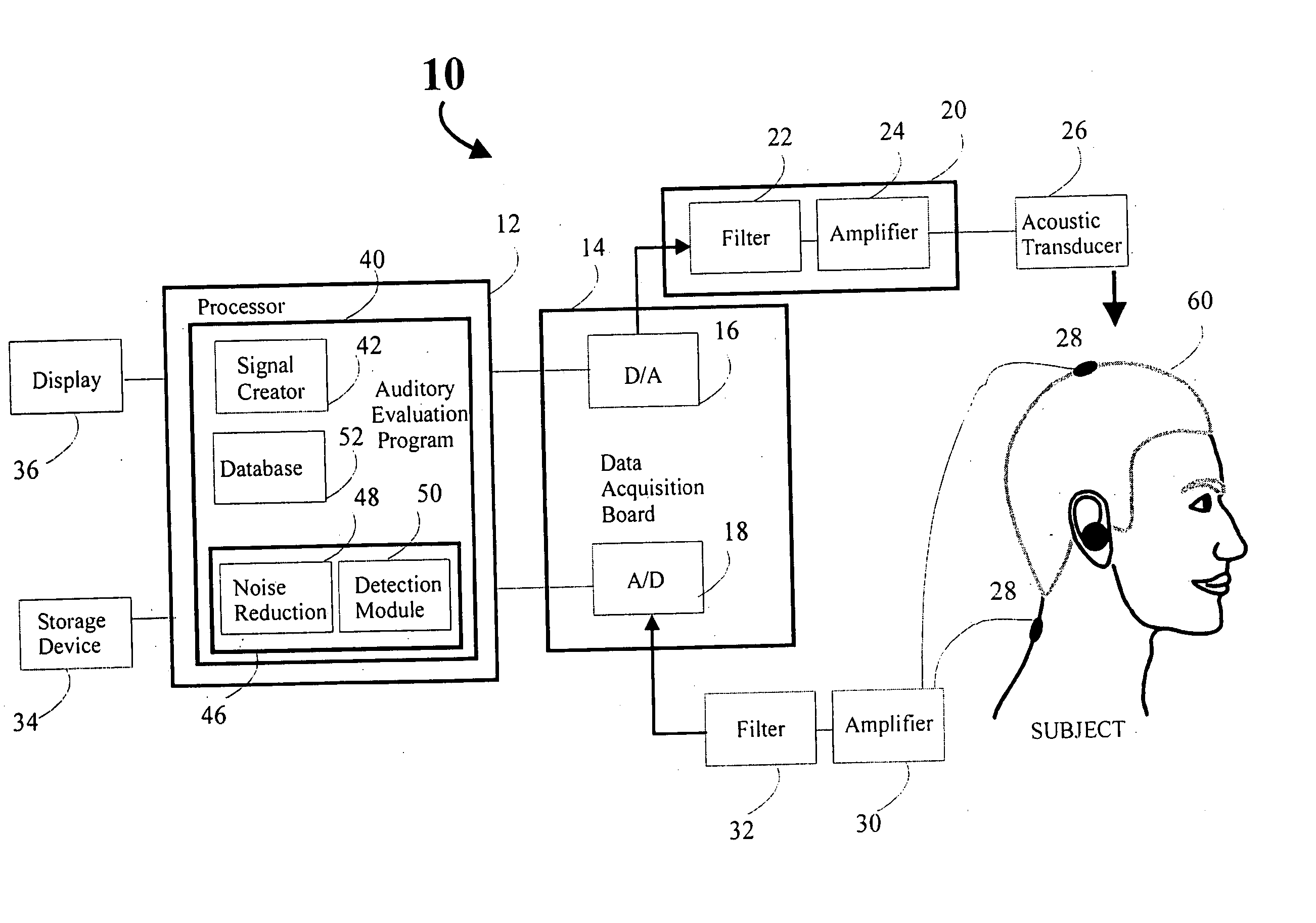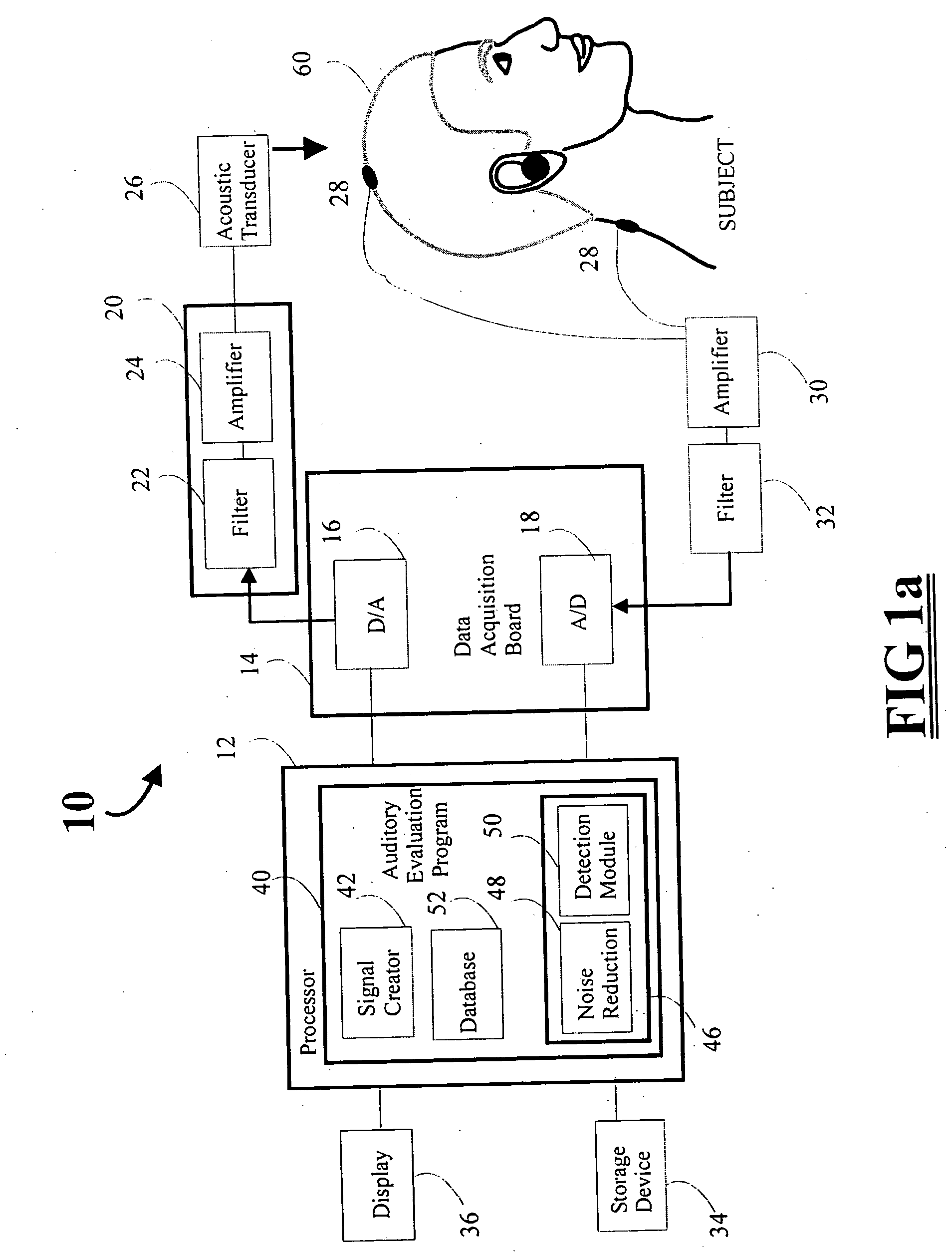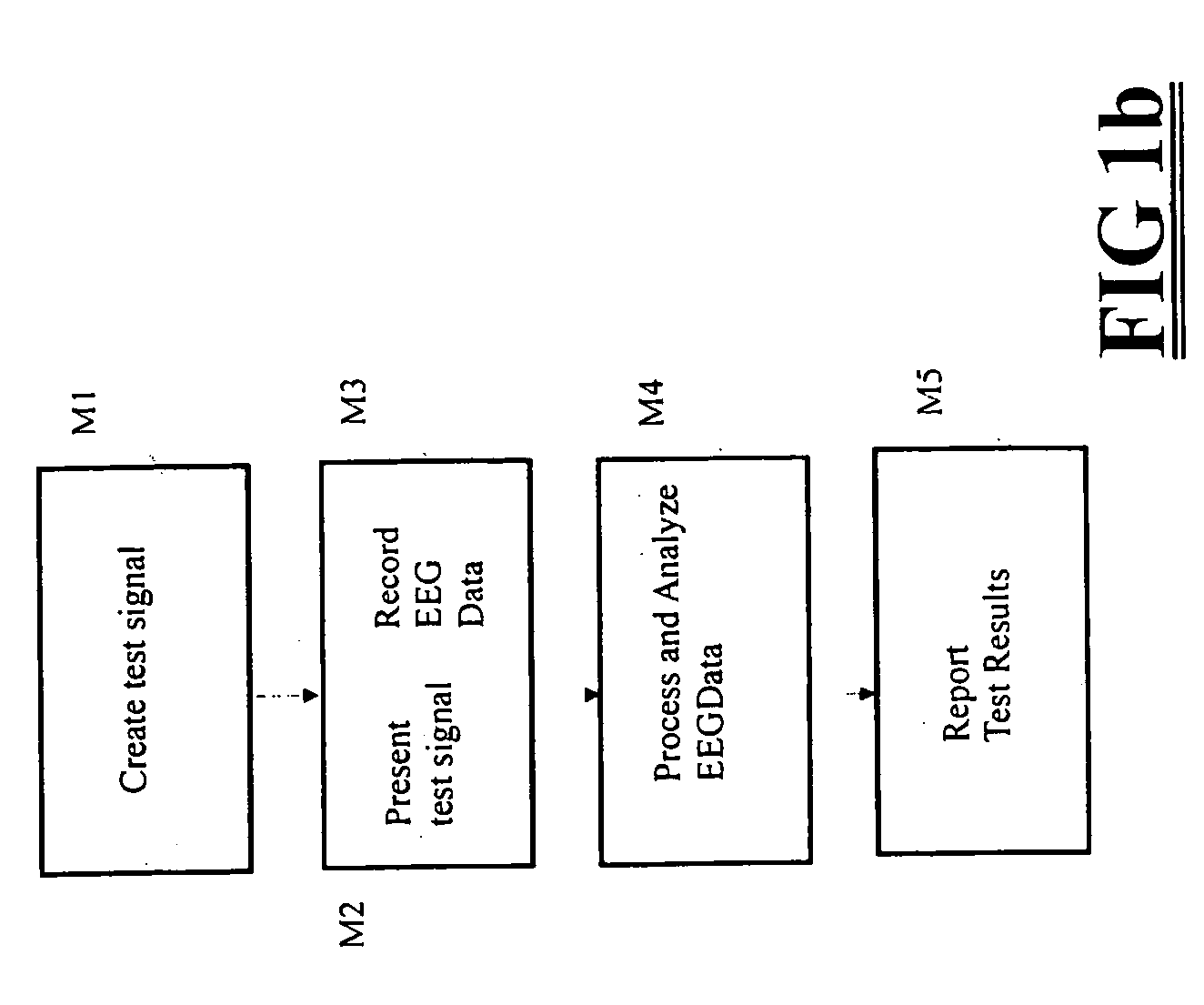Rapid screening, threshold, and diagnostic tests for evaluation of hearing
a technology for hearing and diagnostic tests, applied in the field of hearing assessment, can solve the problems of not being able to automatically detect hearing, requiring a long time, and not having high accuracy
- Summary
- Abstract
- Description
- Claims
- Application Information
AI Technical Summary
Benefits of technology
Problems solved by technology
Method used
Image
Examples
Embodiment Construction
A system and methods are disclosed, in accordance with the present invention, for using SS-AEPs and R-AEPs to achieve objective audiometry by relying upon novel stimuli, test procedures, data criteria, signal processing, statistical, and data analysis techniques. A set of methods is disclosed for using the system to rapidly screen for hearing pathology, to obtain estimates of hearing threshold, or to evaluate other characteristics of the auditory system. The basic hardware and software components of the system will be discussed first. Methods for hearing evaluation, such as for screening and for threshold estimation will then be discussed. These techniques utilize novel types of acoustic stimuli, data analysis, noise reduction and response detection methods. Methods for objective audiometric testing based on R-AEP stimuli will be discussed with respect to obtaining auditory thresholds and other types of information about the auditory system. The system and methods described herein e...
PUM
 Login to View More
Login to View More Abstract
Description
Claims
Application Information
 Login to View More
Login to View More - R&D
- Intellectual Property
- Life Sciences
- Materials
- Tech Scout
- Unparalleled Data Quality
- Higher Quality Content
- 60% Fewer Hallucinations
Browse by: Latest US Patents, China's latest patents, Technical Efficacy Thesaurus, Application Domain, Technology Topic, Popular Technical Reports.
© 2025 PatSnap. All rights reserved.Legal|Privacy policy|Modern Slavery Act Transparency Statement|Sitemap|About US| Contact US: help@patsnap.com



